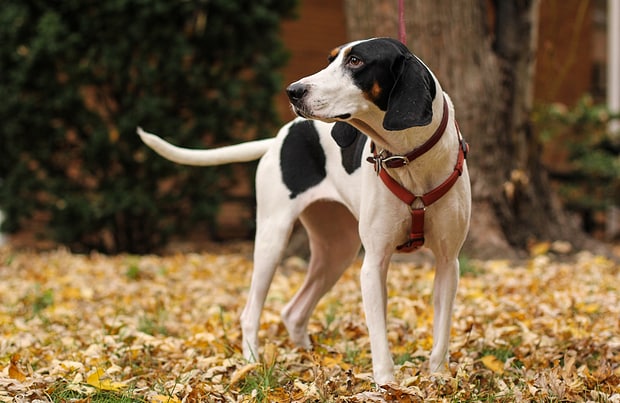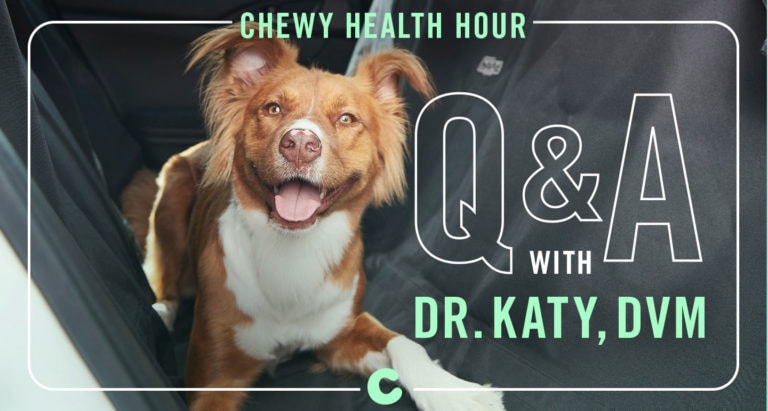“Skin tags” can refer to any small growth found on or in the skin of your dog. Most are benign, but a few are of concern.
If you see a growth, your first step is to rule out non-skin attachments. That sounds odd, but it can be very difficult to tell if your longhaired, large dog has a tick behind his elbow or a skin growth unless you have assistance. Wetting the hair around the growth and looking closely can help. If it is a tick, remove it carefully to avoid any health problems for you or your dog. Ticks present their own problems, but they are relatively easy to remove and avoidable with dog flea and tick prevention.
Once you have ruled out things like ticks and stuck wads of gum, you are left with skin growths and tags. Most tags are of little concern; they are simply small growths coming out from the skin. These tend to be small and flop over if they have any size at all. Many are the color of the skin itself. Senior dogs are more likely to have skin tags than young dogs.
Growths in the skin are often very visible if you have a shorthaired dog, or will be felt when you pet a longhaired dog. While many, if not most, skin tags are benign, it is important for you to check them frequently and act on some right away.
Dog Skin Tag Removal And Growth
Removal of skin tags is a cosmetic issue unless your dog is “worrying” at the tag. Some dogs will itch or chew at skin tags. In those cases, you should have the growths removed. This can usually be done very easily with laser, cautery or surgery — often under a local anesthetic. If your dog has lots of skin tags (a more common occurrence in Toy and Miniature Poodles, as well as Miniature Schnauzers), sedation is best. Skin tag removal can also be easily done if your dog is being anesthetized for another reason, such as dentistry.
Skin tags don’t usually keep growing, but if you notice one is growing or changes color, you should have your veterinarian examine it. I recommend looking over any skin tags monthly. Keep a journal to record any changes or any new tags that have developed. Photos of the locations can be very helpful, too. Finding a small skin tag on a dog with a full coat can be like searching for a needle in a haystack, so any record is important.
Types Of Dog Skin Growths
Here are some of the types of skin growths that occur in dogs.
1. Sebaceous cysts are a common and benign skin growth. These cysts develop in the skin as the result of blockage of a sebaceous gland, usually near a hair follicle. These may erupt and discharge a thick, whitish or grayish material. If a cyst has opened up, you should clean the area and prevent your dog from licking it. Most will heal by themselves, but those that don’t might require some antibiotics. You should not express (squeeze) these cysts, as you may cause an infection or inflammatory reaction from material spreading under and into the skin.
Some breeds are prone to developing sebaceous cysts, although they can appear in any dog and at any age. The list of predisposed breeds includes Cocker Spaniels, Poodles, Schnauzers and some of the terrier breeds. Mixes of those breeds may also be prone to developing these cysts.
2. Another interesting skin growth is a cornifying epithelioma or keratoacanthoma. Despite the impressive names, these are benign skin growths. They look like small, horny projections and are generally found on a dog’s back, tail and legs, especially in middle age. Norwegian Elkhounds are a predisposed breed, along with Lhasa Apsos. I have mainly seen them in Elkhounds. These are not treated or removed unless your dog itches or chews at them. In those cases, surgical or laser removal is recommended.
3. Warts can be seen in dogs of all ages but are most common in young dogs — especially dogs less than 2 years of age. Like human warts, canine warts are caused by a virus. It is a different virus, so these warts are not contagious to people but can spread between dogs. The canine oral papillomavirus causes skin growths in the mouth, on the lips, on eyelids or even between toes. These growths tend to show up in groups or clusters, unlike many other benign skin growths. Most warts have a “rough,” irregular surface and are pigmented.
Canine warts may go away by themselves and don’t usually require any treatment. If your dog fusses at warts or has a number of warts in his mouth making eating stressful, removal may be suggested.
4. Skin growths beyond superficial tags type growths can vary dramatically in size, shape and color. Easiest to identify are those growths that are red and raised above the surrounding skin. In a young dog, cutaneous histiocytomas are not uncommon. These are also called “button” tumors. Boxers and Bull Terriers are believed to be predisposed to them, but my little Labrador Retriever had one of these on her face.
Gus’s growth showed up at about one year of age. It did not bother her and once it reached its full size (about ½ inch in diameter) it stopped growing. Many of these histiocytomas will actually regress spontaneously, but because Gus belonged to a veterinarian, hers was surgically removed. Yes, it was a full-blown case of veterinary owner neurosis! You can choose to keep an eye on a growth like this in a young dog or have your veterinarian remove it. They are considered to be benign growths.
5. A cutaneous histiocytoma does need to be differentiated from a cutaneous mast cell tumor, which is a much less benign skin growth. Mast cell tumors are common skin tumors and tend to show up along the body. Boxers are highly predisposed, but Beagles, Schnauzers, Boston Terriers and Labrador Retrievers are also considered likely breeds for this cancer. Mast cell tumors may be totally within the skin and simply cause a bump. Others will appear reddish in color. Your veterinarian can usually diagnose this cancer with a needle aspirate of the growth.
Mast cell tumors are “graded” depending on appearance, clinical signs and metastasis. While some are fairly benign and can be cured with surgery, others require follow-up therapy with radiation or other treatments.
Tips To Manage Dog Skin Tags
It is important to remember that most skin tags and small growths are not threats to your dog’s health. Some can develop into malignant growths over time, though, and others are bad right from the start. Key actions for you to follow:
- Check your dog or puppy over at least once a month, feeling for and looking at his skin to find any lumps, bumps or growths.
- Record any findings — even try to measure so you will detect any change in size early on.
- Look for changes in color, discharges or ulceration.
- Schedule a veterinary appointment if you have any concerns. Your veterinarian can usually set your mind at ease with a physical exam or may do a fine-needle aspirate to look at the cells of the growth.
- If your dog is scheduled for anesthesia for any reason, you can arrange to have any questionable skin growths removed at the same time. Some skin tags and growths will spontaneously disappear.
- With any luck, the only skin tags or growths you find will be like the histiocytoma I found on Gus’s muzzle.
By: Dr. Deb M. Eldredge
Featured Image: Via JustinSienk/iStock/Thinkstock
Share:









